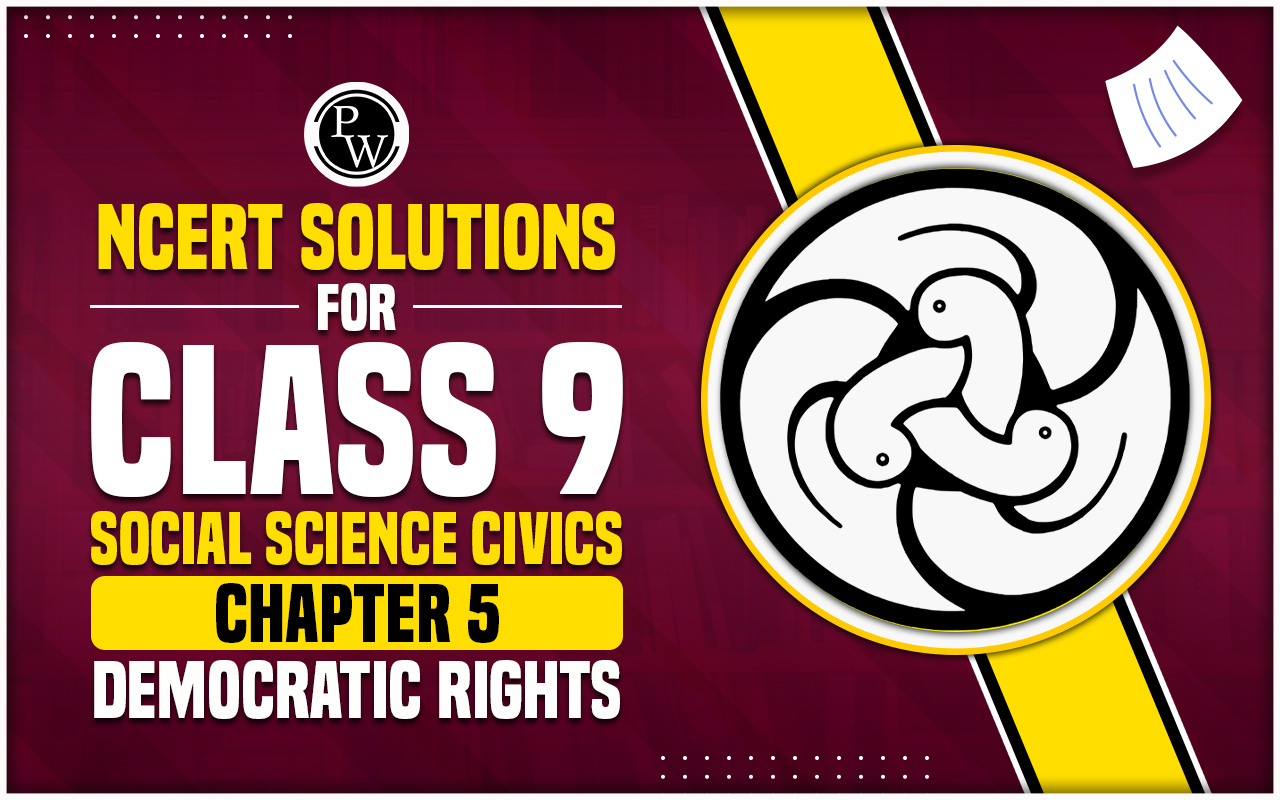
Poverty in India Essay: Poverty means not having enough money to afford basic things like a home, healthcare, and education. It's a tough situation where people struggle to meet their basic needs because they lack money. This essay explains what poverty is, why it happens, and what is being done to fight it in India. It's helpful for students who want to write good essays and do well in exams.
Poverty in India Essay 800 Words
Below we are covering Poverty in India Essay in 800 Words.Poverty is the condition where a person lacks enough money to meet their basic needs, such as food and shelter. In India, poverty is becoming more widespread, particularly in urban areas due to the increasing population. Many people live on the brink of poverty, especially in rural regions, where there are numerous uneducated and unemployed individuals.
People in poverty struggle to afford proper food and often have no homes, forcing them to sleep on streets or sidewalks. This situation leads to a growing demand for food, money, and shelter, but unfortunately, poverty continues to increase due to the scarcity of these resources. This wealth gap between the rich and the poor widens, making it challenging to reduce poverty. The consequences of poverty are numerous and include inadequate housing, illiteracy, a rise in child labor and unemployment, and poor hygiene.
Because of these challenges, impoverished individuals cannot afford nutritious meals, decent clothing, or a quality education simply because they lack the necessary funds.
Understanding Poverty in India
Poverty in India is a complex issue with various dimensions. It is not merely about inadequate income but encompasses a lack of access to basic necessities such as food, clean water, education, healthcare, and sanitation. The Multidimensional Poverty Index (MPI) developed by the United Nations Development Programme (UNDP) highlights the multi-dimensional nature of poverty in India.
Causes of Poverty
India's population growth, while considered a demographic dividend in certain aspects, has placed substantial pressure on the country's resources and infrastructure, creating formidable challenges in ensuring adequate provisions for all its citizens. Economic inequality exacerbates the issue, with a considerable portion of the population enjoying substantial economic prosperity while a significant majority grapples with financial instability.
Moreover, the prevalence of unemployment and underemployment, particularly in the informal sector, exacerbates poverty levels by limiting income-earning opportunities for a substantial portion of the population. Additionally, the scarcity of accessible quality education further perpetuates the cycle of poverty, as it constrains individuals' capacity to secure well-paying jobs and break free from the clutches of economic hardship.
Inadequate healthcare infrastructure and a lack of affordable healthcare services compound these issues, contributing to the persistence of poverty, as health-related problems often result in both reduced income and heightened expenses. Furthermore, the pronounced disparities between rural and urban areas, encompassing disparities in infrastructure, educational access, and employment prospects, significantly contribute to the prevalence of poverty in rural regions, deepening the rural-urban divide and amplifying socioeconomic disparities across the nation.
The Problems Poverty Creates
Malnutrition is a pressing concern intricately linked with poverty in India. This dire situation often results in inadequate nutrition, thereby precipitating issues like stunted growth and developmental impediments, with children being especially vulnerable to its detrimental effects.
Furthermore, the adverse impact of poverty is acutely felt in the realm of education, where limited access to quality learning opportunities becomes a pervasive impediment. This restriction not only hampers personal growth but also undermines the potential for professional advancement, perpetuating the cycle of poverty for many individuals.
Moreover, the challenges posed by subpar healthcare infrastructure and unsatisfactory sanitation conditions disproportionately afflict impoverished communities. This unfortunate reality translates into elevated morbidity and mortality rates, compounding the already dire circumstances of those living in poverty.
Additionally, poverty acts as a catalyst for social inequality, further accentuating the divide between the privileged and the marginalized. This growing chasm between the haves and the have-nots not only fosters disparities in wealth and access but also engenders social unrest and instability, posing a formidable challenge to societal harmony.
Furthermore, poverty in India has a regrettably enduring quality, often taking on the form of generational poverty. This means that the limited access to opportunities for improvement faced by one generation frequently extends its grip to the next, creating a cycle of impoverishment that is difficult to break, unless comprehensive measures are undertaken to address its underlying causes.
Also Check - Durga Puja Essay
Solutions to Remove Poverty
Investment in education and skill development initiatives holds the potential to empower individuals, equipping them with the knowledge and capabilities needed to access improved employment prospects and elevate their socioeconomic status.
Moreover, the government's commitment to job creation, particularly in rural regions, through targeted initiatives can play a pivotal role in mitigating the pervasive challenges of unemployment and underemployment, offering hope to those seeking livelihood opportunities.
Furthermore, the expansion of social safety net programs, encompassing essential provisions such as food subsidies, healthcare access, and unemployment benefits, can serve as a critical safety cushion for marginalized and economically vulnerable populations, ameliorating their struggles and enhancing their overall well-being.
In addition, fostering rural development via dedicated efforts geared toward enhancing infrastructure, which includes the provision of clean water and sanitation facilities, can bridge the rural-urban gap by improving living conditions and boosting economic opportunities in traditionally underserved areas.
Similarly, instituting policies that prioritize progressive taxation and advocate for equitable wealth distribution is essential in addressing the issue of economic inequality, effectively reducing the wealth gap and promoting a fairer, more just society.
Lastly, the promotion of women's empowerment, through the facilitation of educational and employment opportunities, stands as a potent strategy to combat poverty. This approach not only enhances women's personal and financial autonomy but also contributes significantly to overall poverty reduction efforts.
Conclusion
Poverty in India is a big problem that has been around for a long time, and it causes many problems. To solve it, we need to use different ways and ideas. India has made progress, but we need to keep working hard, have good leadership, and make fair rules to help many people escape poverty and make society fairer. It's not just the right thing to do; it's also essential for India's future growth and peace.
Poverty in India Essay 500 Words
Below we are covering Poverty in India Essay in 500 Words.Poverty remains a daunting challenge in India, despite its remarkable economic growth. This essay explores the causes, consequences, and potential solutions to poverty in India essay in 500 words.
Causes of Poverty
Several factors contribute to the persistence of poverty in India. Population growth, often considered a demographic dividend, exerts immense pressure on resources and infrastructure. Economic inequality widens the gap between the rich and poor, while unemployment and underemployment limit income opportunities. Inadequate access to quality education restricts job prospects, especially in rural areas. Additionally, the lack of affordable healthcare services amplifies the financial burden on impoverished individuals. Rural-urban disparities in infrastructure and opportunities further deepen the problem.
Consequences of Poverty
Poverty in India manifests in various detrimental ways. Malnutrition is a pressing concern, particularly affecting children, leading to stunted growth and developmental challenges. Limited access to quality education hampers personal growth and economic mobility. Subpar healthcare infrastructure and sanitation conditions result in higher morbidity and mortality rates among impoverished communities. Social inequality widens, fostering disparities in wealth and access while fueling social unrest. The intergenerational nature of poverty perpetuates its grip, making it challenging to break free from its cycle.
Solutions to Remove Poverty
Addressing poverty in India requires a multifaceted approach. Investment in education and skill development initiatives can empower individuals, enabling them to access better job opportunities and improve their socioeconomic status. The government's commitment to job creation, particularly in rural areas, is vital for alleviating unemployment and underemployment.
Expanding social safety net programs, including food subsidies, healthcare access, and unemployment benefits, serves as a critical safety cushion for marginalized populations. Rural development efforts, including infrastructure improvements, can bridge the rural-urban gap and enhance economic opportunities in underserved areas.
Implementing policies that promote progressive taxation and equitable wealth distribution can reduce economic inequality and foster a fairer society. Additionally, empowering women through education and employment contributes significantly to poverty reduction efforts.
Conclusion
Poverty in India remains a persistent challenge, but it is not insurmountable. Addressing poverty requires a concerted effort, including investment in education, job creation, social safety nets, rural development, and equitable policies. By tackling poverty comprehensively, India can work toward a fairer and more prosperous future for all its citizens.
Poverty in India Essay 250 Words
Below we are covering Poverty in India Essay in 250 Words.Poverty is an enduring issue in India, coexisting alongside its economic growth. It signifies the inability to access basic necessities due to financial constraints. This Poverty in India Essay in 250 word covering poverty causes, consequences, and solutions.
Causes
Population Growth: Rapid population growth strains resources, making it hard to provide for all.
Economic Inequality: Uneven wealth distribution widens the gap between rich and poor.
Unemployment: High unemployment and underemployment rates limit income opportunities.
Education Gap: Limited access to quality education restricts job prospects, particularly in rural areas.
Healthcare Access: Lack of affordable healthcare leads to reduced income and increased expenses.
R ural-Urban Disparities: Disparities in infrastructure, education, and jobs deepen poverty.
Consequences
Malnutrition: Particularly among children, leading to stunted growth and developmental challenges.
Limited Education: Restricts personal growth and economic mobility.
Health Issues: Subpar healthcare and sanitation lead to higher morbidity and mortality.
Social Inequality: Amplifies wealth and access disparities, potentially leading to social unrest.
Solutions
Education and Skills: Invest in education and vocational training to enhance employability.
Job Creation: Government-led job initiatives, especially in rural areas, can reduce unemployment.
Social Safety Nets: Expand food subsidies and healthcare access for marginalized populations.
Rural Development: Bridge the rural-urban gap through development and infrastructure investments.
Equitable Policies: Implement progressive taxation and wealth distribution policies.
Women's Empowerment: Promote women's education and employment for poverty reduction.
Poverty persists in India despite economic growth. Its causes include population growth, economic inequality, unemployment, limited education, healthcare access, and rural-urban disparities. Consequences range from malnutrition to social inequality. Poverty need not be a permanent feature of India's landscape, and determined efforts can lead to a brighter and more inclusive future.
| Related Links | |
| Holi Essay | Forest Essay |
| Cow Essay | |
Poverty in India Essay FAQs
What is poverty in India Essay?
Why is poverty becoming more widespread in urban areas of India?
What are some consequences of poverty in India?
What is the Multidimensional Poverty Index (MPI) in India?
What are some causes of poverty in India?










